| << |20 | 21 |
1 | 2 | 3 | 4 | 5 | 6
Portugal, Adventure #26, Page 1
Pictures and Stories About Bicycle Adventures
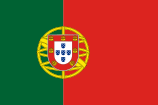
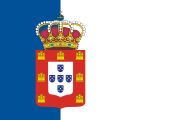 Portugal's
Portugal'sDouro River Valley
By Bicicleta (Bicycle), Septembre, 2009
Itinerary
- Arrive at Lisbon, Visit 6 Days (Conference 4 Days)
- Tour West Coast, Central, Viseu, Dao Region, 2 Days
- Train to Pinhão, Bicycle Self Guided Tour Douro River Valley, 6 Days
- Train from Pocinho to Porto, Depart Porto, 2 Days
Forgive my Americano Keyboard; it does not have Acute, Tilde, or Circumflex accent options.
These characters must be hard coded with strings of special code - it takes extra effort.
Pinhão is coded as Pinhão, with proud extra effort by the Author.
FYI, the ão sound in Portuguese is pronounced as 'ow.n' in English and
the oa sound in Portuguese (Lisboa) is pronounced as 'on' (Lisbon).
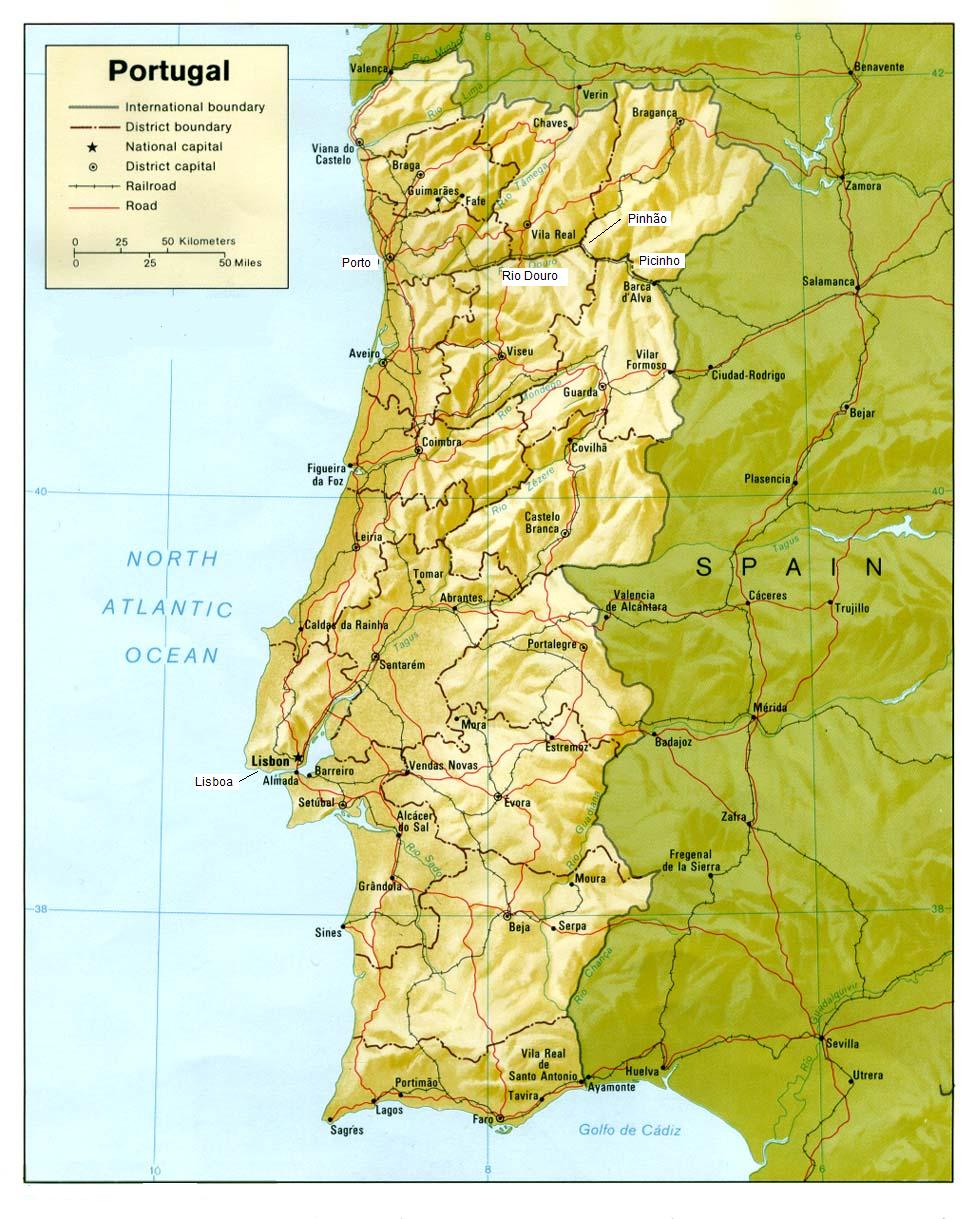
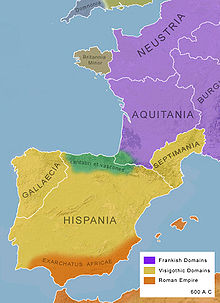
Cool Facts and Observations
Food
Mass Transportation
The Knights Templar and Portugal
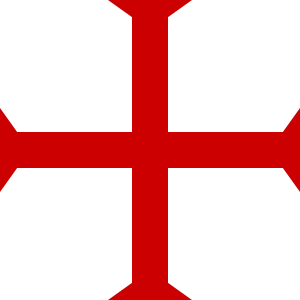 This is important because Portugal had always had a special relationship with the Knights Templar:
This is important because Portugal had always had a special relationship with the Knights Templar:
- The Templars financed a Crusade to rid Portugal of its Muslim Occupiers.
- The Templars were technicians with various skills (in a time when any skilled labor was uncommon).
- The Templar Cross (Symbol) was adopted by the country of Portugal.
Facts: Poor Fellow-Soldiers of Christ and of the Temple of Solomon (Latin: Pauperes commilitones Christi Templique Solomonici), commonly known as the Knights Templar or the Order of the Temple (French: Ordre du Temple or Templiers). Source: Wikipedia. In Portugal, they are called The Order (d'Ordem).After King Philip IV of France started his purge of Templars (1307, October, Friday the 13th), many escaped to Portugal. They were immediately accepted by King Denis (of the House of Burgundy, King of Portugal and the Algarves 1279-1325, Son of Afonso III of Portugal and Beatrice of Castile) for several reasons. One, King Denis knew King Philip's charges to be false and Templar confessions to be under duress (torture), but the Pope (Clement) literally resided in France at the time so the Pope had to be careful and did issue the Papal Bull to arrest all Templars and seize their assets. King Denis petitioned the Pope to allow Templars outside of France to not be persecuted and to even maintain their holdings. This petition was finally approved (long after all holdings were taken). Meanwhile, the Templars had money and skills as masons, shipwrights, sailors, and soldiers. All of which King Denis put to use. Important Note: Templar Masons built simple and practical structures using late gothic conventions - It appears that Templar Masons have nothing to do with Freemasons and vice versa, except that some Freemasons have used some Templar symbols and some Templar names [many myths here].
Escaping Templars went to Scotland
Knights Templar:
 Knights of Christ:
Knights of Christ:
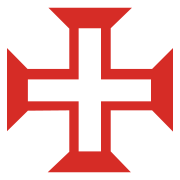 Portugal:
Portugal:
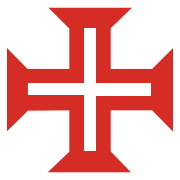
The Knights Templar organization, already well established in Portugal, upon persecution by King Philip IV of France simply changed their name from Knights Templar to Knights of Christ. One of the larger Templar holdings in Portugal is the Convent of Christ in Castle Tomar. Built in 1160 as a stronghold for the Knights Templar, it became the headquarters of the renamed Order of Christ (Portugal), often called or referred to as "the Order". One of the lesser known facts about the Knights Templar is that they had a small fleet of ocean going Ships [18 known], mainly used for cargo, transport, and high speed messaging that saw service from the Mediterranean to France and England. They also had inland river boats. At one point, the Templars owned the island of Cyprus.
Royal Emblem(s)
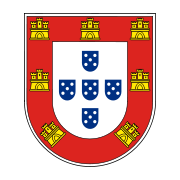 The Shield of the House of Burgundy has always been a variation of a blue cross. Later variations show five smaller shield shapes arranged in a cross pattern, the shields themselves containing five white circles or squares. Later, the Portuguese Burgundy's added a ring of castles around the Shield of Burgundy to symbolize the organized action of Portuguese Houses to retake Portugal from the Muslim Occupiers. The number of castles has varied, but the latest version has seven castles, supposedly for the seven major strongholds and engagements to retake Portugal from the Muslims. The displayed shield emblem is more or less the emblem in the current Portuguese National Flag.
The Shield of the House of Burgundy has always been a variation of a blue cross. Later variations show five smaller shield shapes arranged in a cross pattern, the shields themselves containing five white circles or squares. Later, the Portuguese Burgundy's added a ring of castles around the Shield of Burgundy to symbolize the organized action of Portuguese Houses to retake Portugal from the Muslim Occupiers. The number of castles has varied, but the latest version has seven castles, supposedly for the seven major strongholds and engagements to retake Portugal from the Muslims. The displayed shield emblem is more or less the emblem in the current Portuguese National Flag.
The Armillary Sphere
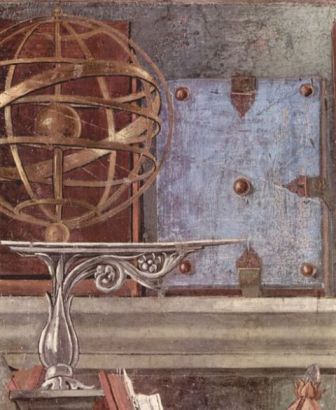 This is quite interesting. Other names for the Armillary Sphere are: astrolabe, spherical astrolabe, armilla, or armil - Wikipedia. Armillary derives from armilla latin for (circle or bracelet) - Wikipedia. The Armillary Sphere is a celestial navigation tool. Both the Greeks and the Chinese had simple Armillary Sphere models before the time of Christ (BC or BCE). Pictured is a Sandro Botticelli (more known for his famous Nude in a Clam Shell) painting with an Armillary Sphere
This is quite interesting. Other names for the Armillary Sphere are: astrolabe, spherical astrolabe, armilla, or armil - Wikipedia. Armillary derives from armilla latin for (circle or bracelet) - Wikipedia. The Armillary Sphere is a celestial navigation tool. Both the Greeks and the Chinese had simple Armillary Sphere models before the time of Christ (BC or BCE). Pictured is a Sandro Botticelli (more known for his famous Nude in a Clam Shell) painting with an Armillary Sphere 
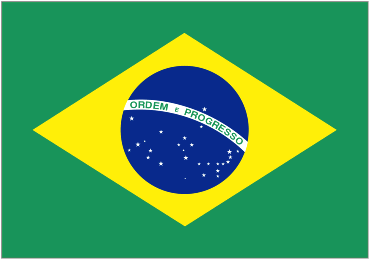
Famous Portuguese Explorers
The Portuguese were Explorers. Some famous, known, Portuguese explorers follow.- Henry the Navigator, 1394 - 1460:
- Encouraged his father to conquer Ceuta (1415), the Muslim port on African side of the Straits of Gibraltar, also a pirate base who made Portuguese Slaves
- Saw the possibility of bypassing the Mediterranean land/sea trade routes to Asia
- Brought African Slaves and gold to Portugal
- Member of the Order of Christ (Knights Templar)
- Had charts made (hired cartographers, gathered/collected chart information
- Circumvented Muslim Sahara trade routes, circumnavigated Africa (as far as possible)
- Charted and explored much of the African Coast
- Rediscovered Madeira Islands, 1420, colonized in 1427
- Vasco da Gama (buried at Mosteiro Dos Jerónimos), 1460 or 1469 - 1524:
- Died in India
- Very successful
- Commander of the first ships to sail directly from Europe to India thus avoiding the Mediterranean land/sea trade route controlled by the Republic of Venice
- 1497-8 Exploratory Journey to India (Explored from Southwest, South, and Southeast Africa to West India). Tried to find a friendly port in West Africa but ran into unfriendly Muslim sultans
- 1502-3 with Military and Naval reinforcements, set up bases and trade agreements
- 1524 for financial gain, conducted problem resolution, was granted Governor and Viceroy of India
- Ferdinand Magellan, (Fernão de Magalhães), 1480 - 1521:
- Sailed/Explored under Spanish sponsorship
- Found the Spice Islands of Indonesia
- First European to lead an expedition across the Pacific Ocean
- First to attempt to circumnavigate the Earth, killed in the Philippines but ship went all the way
- Found the Strait of Magellan, a protected inland passageway that avoids the rougher seas found at Cape Horn (Drake Passage)
Manueline Architecture
The following are characteristics of Manueline Architecture (Wikipedia):
- Elements used on ships: the armillary sphere (a navigational instrument and the personal emblem of Manuel I and also symbol of the cosmos), spheres, anchors, anchor chains, ropes and cables.
- Elements from the sea, such as shells, pearls and strings of seaweed.
- Botanical motifs such as laurel branches, oak leaves, acorns, poppy capsules, corncobs, thistles.
- Symbols of Christianity: such as the cross of the Order of Christ (former Templar knights), the military order that played a prominent role and helped finance the first voyages of discovery. The cross of this order decorated the sails of the Portuguese ships.
- Elements from newly discovered lands (such as the tracery in the Claustro Real in the Monastery of Batalha, suggesting Islamic filigree work, influenced by buildings in India)
- Columns carved like twisted strands of rope (this is not an original concept, as twisted columns can be found in the 13th-century cloister of Basilica of St. John Lateran, in Rome)
- Semicircular arches (instead of Gothic pointed arches) of doors and windows, sometimes consisting of three or more convex curves
- Multiple pillars
- Eight-sided capitals
- Lack of symmetry
- Conical pinnacles
- Ornate portals with niches or canopies
- Beveled crenellations (castellated battlements like square sine waves - Dennis)
- A linear element, a line, sometimes itself called a Manueline, which could be plain but was often represented as a rope or a vine, often 3 or 4 inches wide, that completely surrounds a door, window, or portal, or it could completely go around a room or even a building - Added by Dennis.
Jerónimos Monastery
Quoting Wikipedia:
The house for the Hieronymite monks was built on the same site of the Ermida do Restelo, a hermitage that was founded by Henry the Navigator at about 1450. It was at this hermitage, that was already in disrepair, that Vasco da Gama and his men spent the night in prayer before departing for India in 1497.
The existing structure was started on the orders of Manuel I (1515-1520) to commemorate Vasco da Gama's successful return from India. It was originally meant as a church for the burial of the House of Aviz, but it also became a house of prayer for seamen leaving or entering port.
Construction of the monastery began in 1502 and took 50 years to complete. The builders used a local gold-coloured limestone called 'Pedra Lioz' for construction. The building of the monastery was funded by a 5% tax on eastern spices. By this influx of riches, the architects had enough financial margin to think big. The enormous amount of funds needed for this monastery, meant abandoning the construction of the Aviz pantheon in the Monastery of Batalha.
- The monastery was designed in the Manueline style by Diogo de Boitaca.
- The monastery withstood the Great Earthquake of 1755 without too much damage.
- The Church of Monastery is called Santa Maria.
- There is a statue of Baby Jesus, Mother Mary, and her mother Saint Anne (Santa Ana or Santana)
Above Left: Church of Santa Maria.
Above Right: Courtyard of St Jerónimos.
Above Left: The Chancel of Santa Maria. King Manuel had a few wives. Going against the wishes of the King and the other Wives, the last surviving wife, Queen Catherine of Habsburg (Hapsburg), built the Chancel as she wanted it. It contains the tombs of the royal family (including herself). The Chancel is built in a 'Classical Style' (not a Manueline or Late Gothic Style) - To Queen Catherine's credit, this architecture marked the beginning of the Renaissance Style of architecture.
Above Right: See the Knights Templar symbol?
Above Left: See the Knights Templar symbol?
Above Right: See any Knights Templar symbols?
St Jerome (347-420 AD), thought to be of Illyria (the Balkan area between Italy and Greece) was a well educated and a well traveled man who is credited for translating the bible into Latin. He spoke and wrote Greek and Latin and is considered a Doctor of the Church (as in Doctorate). His translation included Hebrew sources while other previous translations were just from Greek. He was a Christian Apologist. Apologist's "present a rational basis for the Christian faith, defend the faith against objections, and expose the perceived flaws of other world views" [Wikipedia].
The St Jerome LION Story If the reader has ever heard the story of the man that removed a thorn from the paw of a Lion, it is supposed to be Jerome who performed this act. He apparently actually had a Lion as a kind of pet. The story goes that Jerome was entering a Hermitage/Monastery when all the students/initiates were seen running out of the building. They told Jerome that there was a lion in the Monastery. Jerome entered the building to investigate and, long story short, removed the thorn from the paw of the lion. From then on, the lion hung around the Monastery, and eventually became an item of the Monastery. Many paintings of St Jerome show a lion in the foreground.